Calypte anna
IUCN
LCBasic Information
Scientific classification
- name:Calypte anna
- Scientific Name:Calypte anna,Anna's Hummingbird
- Outline:Climbing birds
- Family:
Vital signs
- length:About 11 cm
- Weight:3-5g
- lifetime:8.5 years or so
Feature
City birds in Vancouver, British Columbia, Canada, change their faces
Distribution and Habitat
Vermilion hummingbirds breed on the west coast of North America. The breeding range extends from British Columbia in Canada to Arizona in the United States to the western edge of New Mexico. But the non-breeding range is expanding. This ranges from the coast of Alaska to northern Mexico.
Includes: In the United States, Alabama, Alaska, Arizona, Arkansas, California, Colorado, Florida, Georgia, Idaho, Kansas, Louisiana, Mississippi, Missouri, Montana, Nevada, New Mexico, Oregon, Pennsylvania, Tennessee, Texas, Utah, Observed in Washington State and British Columbia, Canada (residing on Vancouver Island).
Settle in open woods, bushes, gardens and parks. During the breeding season, they are confined to California in the United States, and habitat isolation is established between the sexes. During this time, males typically move to more open habitats, including canyon sides and hillsides. The female birds live in woods, including evergreen forests and oak forests. As the seasons chan
Appearance
The vermilion hummingbird is 11 cm long, has a wingspan of 11-12 cm and weighs 3-5 grams. It is a hummingbird of medium size and slightly stocky. Heterotypic, male and female differences are great. Both male and female birds have a bronzed green back area with a glossy appearance while the belly becomes grayer. It has a medium-length beak and a broad tail. The area from the head to the throat of the male bird is bright purple. The structural color of the feathers on the head of an adult male bird will vary depending on the Angle of light. The species is the only North American hummingbird with a pink crown on its head. The female bird has a green head, but may have a metallic red or purple feather in the center of the throat area. The upper part of the tail is white, the center is metallic green, and the outer tail feathers darken to black.
Young birds are similar to adult females, but with some minor differences. Immature males have bright plumage on the throat and crown, while the
Details
Scarlet hummingbird (scientific name: Calypte anna) foreign name Anna' s Hummingbird, no subspecies. The Latin scientific name is named after Anna Messena.
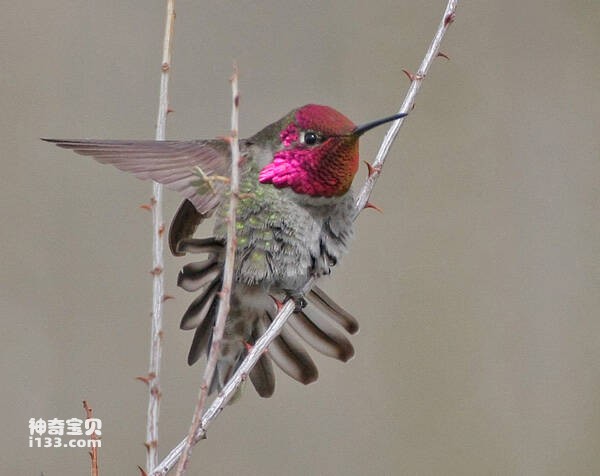
Vermilion hummingbirds are not social birds, they are regional and will enter the area of their territory at any time, regardless of size. These birds migrate between summer and winter. Be active during the day and rest at night to save energy. The wings flap rapidly when flying, fast, powerful and lasting; The frequency can reach more than 50 times per second. Good at lingering in the flowers "grounded", sometimes can fly backwards. During hover flight, vermilion hummingbirds maintain a high frequency wingspan pattern through various flights and can dive and climb quickly, which is achieved by their strong pectoral muscles. The pectoral muscles that power hummingbird flight consist entirely of fast glycolytic fibers that respond quickly and are resistant to fatigue.
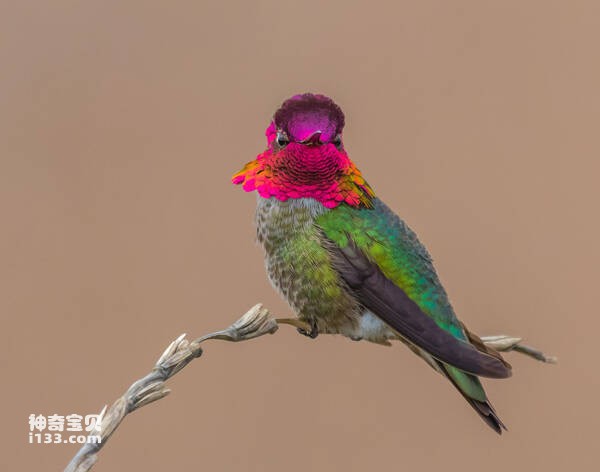
Vermilion hummingbirds are the northernmost of all hummingbirds throughout the year, and during the cold season they gradually gain weight as they convert sugar into fat during the day. In addition, hummingbirds with insufficient body fat stores or feathers throughout their bodies can survive freezing weather by slowing down their metabolism and entering a subdormancy state.
Vermilion hummingbirds can shake their bodies up to 55 times per second to remove pollen or dust from their feathers during flight or in dry weather. Each twist lasts fortieth of a second and exerts 34 times the force of gravity on the bird's head. These birds use long, extendable tongues to feed on nectar. They also catch small insects and other arthropods in flight or collect them from vegetation. A PBS documentary shows how vermilion hummingbirds eat flying insects: They aim at flying insects and then open their beaks to catch their prey. As well as collecting nectar, they also help to pollinate plants. This species sometimes feeds on SAP. The male bird has a hoarse, metallic call and perches overhead above trees and bushes. They are often seen in backyards and parks.
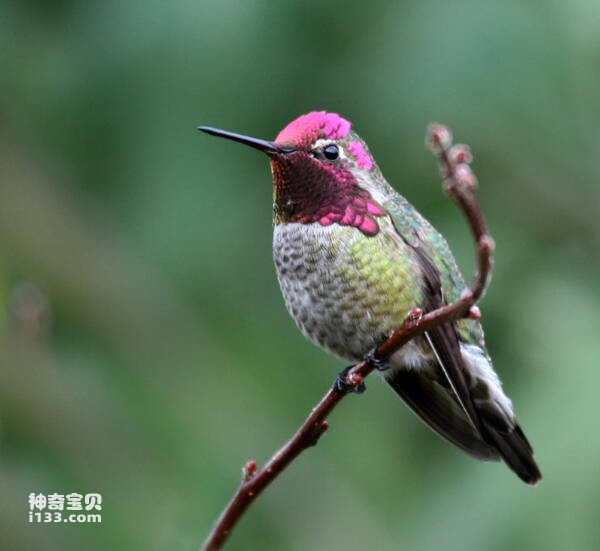
Unlike most northern temperate hummingbirds, vermilion hummingbird males sing during courtship. The song is thin and jarring, scattered with hum and hiss, and lasts for more than 10 seconds. During the breeding season, male birds can be observed performing aerial displays over their territory. Male birds also use their wings to repel other male hummingbirds and even large insects that try to feed there, such as bumblebees and hawkmoths. When the female flies into the male's territory, it soars about 40 meters before leaping over the receiver. As it swoops down, the male bird travels at an average speed of 27 m/s, or 385 body lengths per second. While diving to the bottom, the male bird travels at a speed of 23 m/s and makes a loud sound, similar to an "explosive squeak".
The four main food sources of vermilion hummingbirds are nectar from flowers, SAP from trees, a mixture of sugar and water secreted from the leaves of plants and grasses, and very small insects and spiders. They are narrow birds whose bodies are adapted to hover over flowers. These two functions make it easy to extract nectar. As the bird hovers over the flower, it sticks out its tongue and inserts it into the flower. Vermilion hummingbirds love long tubular flowers in red, orange or purple hues. Some common hummingbird feeding plants include: Rhododendron arborescens, Fuchsia arborescens, red morning glory, honeysuckle and impatiens. However, the frequency of feeding is highest: Ribes malvaceum, Ribes speciosum, Arctostaphylos glauca, Diplacus longiforus, Salvia spathacea, California willow leaf, Western Aquilegia formosa and Pedicularis densiflora. In addition to flowers, vermilion hummingbirds can find food in the air, either by catching insects in flight or by eating insects caught in spider webs. They also use holes in trees to extract SAP.
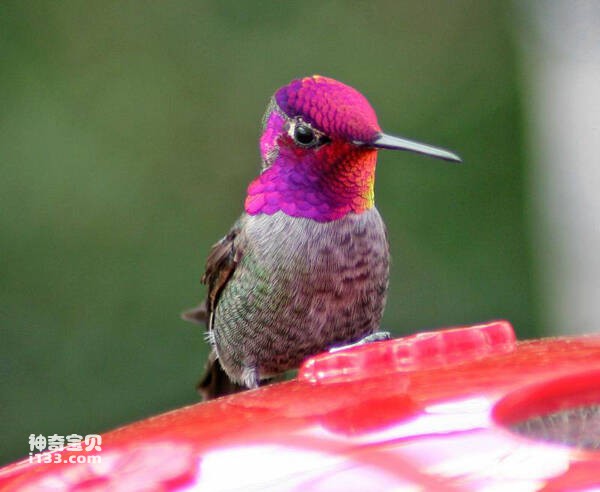
The breeding season for vermilion hummingbirds begins in November-December and continues until seasonal mating begins sometime between April and May when winter rains begin. It is during this time that the males enter the breeding area and the females are responsible for nesting. The nests are tied together by spider webs and lined with soft materials such as plants, feathers or hair. The outside of the nest is covered with bark, dead leaves, lichen, or wood chips in an attempt to camouflage it. The real mating ritual begins when the female enters the male's territory. After the male spots the female, he makes a series of dives in the air and starts chasing her. During the chase, the female leads the male to her nest area and perches. During mating, the female spreads her tail and bends it slightly down to the side. In order to be fertilized, the male must sit backward. During this time, it may bite the female's crown feathers with its beak and twist its belly, with its tail hanging down. Mating lasts 3 to 5 seconds.
Vermilion hummingbirds lay an average of two white oval eggs per litter. Produce 1 every other day. The female incubates and raises the young. The female incubates the eggs for 14-19 days, and the chicks incubate in the nest for another 18-23 days. Baby birds are very small and hardly resemble adult larvae. Open eyes on day 5 after hatching. By six days old, it's completely covered with fluff. After the nesting period, the young remain dependent on their mother for a few days, but become fully independent within 1-2 weeks. Vermilion hummingbirds, which are not yet adults, begin to exhibit territorial behavior when they are very young. After leaving the nest, there is a tendency to have couples, usually brothers and sisters. However, by autumn, most young vermilion hummingbirds will have separated and maintained their territory. The average life span is 8.5 years.
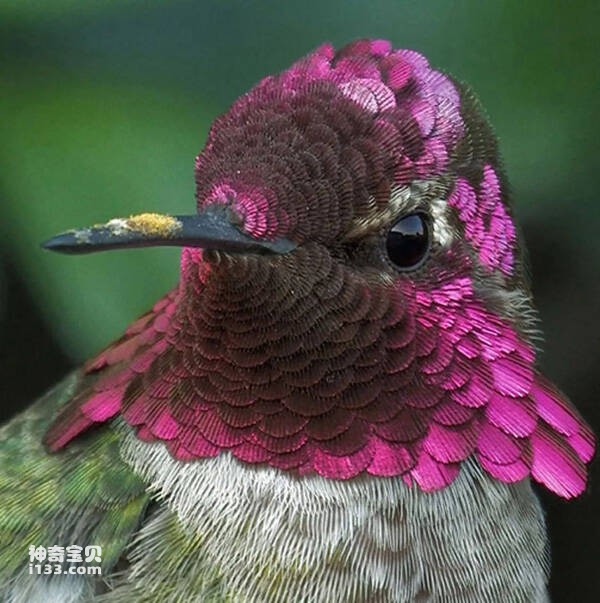
Scarlet hummingbirds, with their emerald green plumage and glittering rose-pink throats, are more like flying jewels than birds, but they are also fierce defenders and tenacious defenders of their territory. In 2017, the vermillion hummingbird was named the city bird of Vancouver, British Columbia, Canada, where it stays throughout the winter.
Over the past 40 years (up to 2017), the species has experienced significant growth in North America, increasing by 180% in 40 years, or 29.3% per decade. The vermilion hummingbird population, estimated at 1.5 million, appears stable and is therefore not considered an endangered species. Since the 1950s, vermilion hummingbird populations have been spreading and growing. They spread north and east from their original habitat. The flowers and breeders of suburban gardens make it possible for them to extend into these different areas. Vermilion hummingbirds are common throughout most of their range; So, there are regular sightings. In addition, they are well adapted to the suburbs.
Listed on the IUCN Red List of Threatened Species (IUCN) 2020 ver3.1 - Not Threatened (LC).
Protect wild animals and eliminate wild meat.
Maintaining ecological balance is everyone's responsibility!








